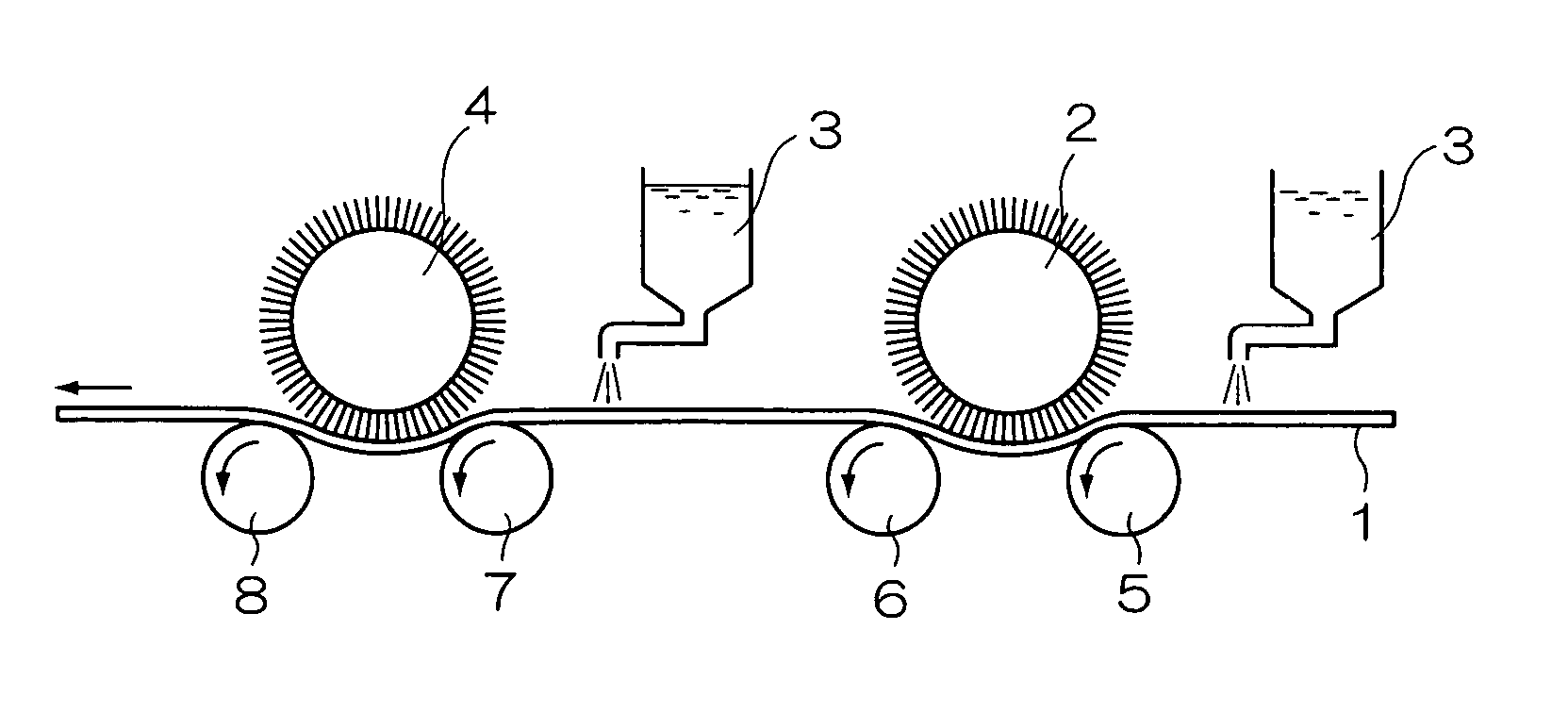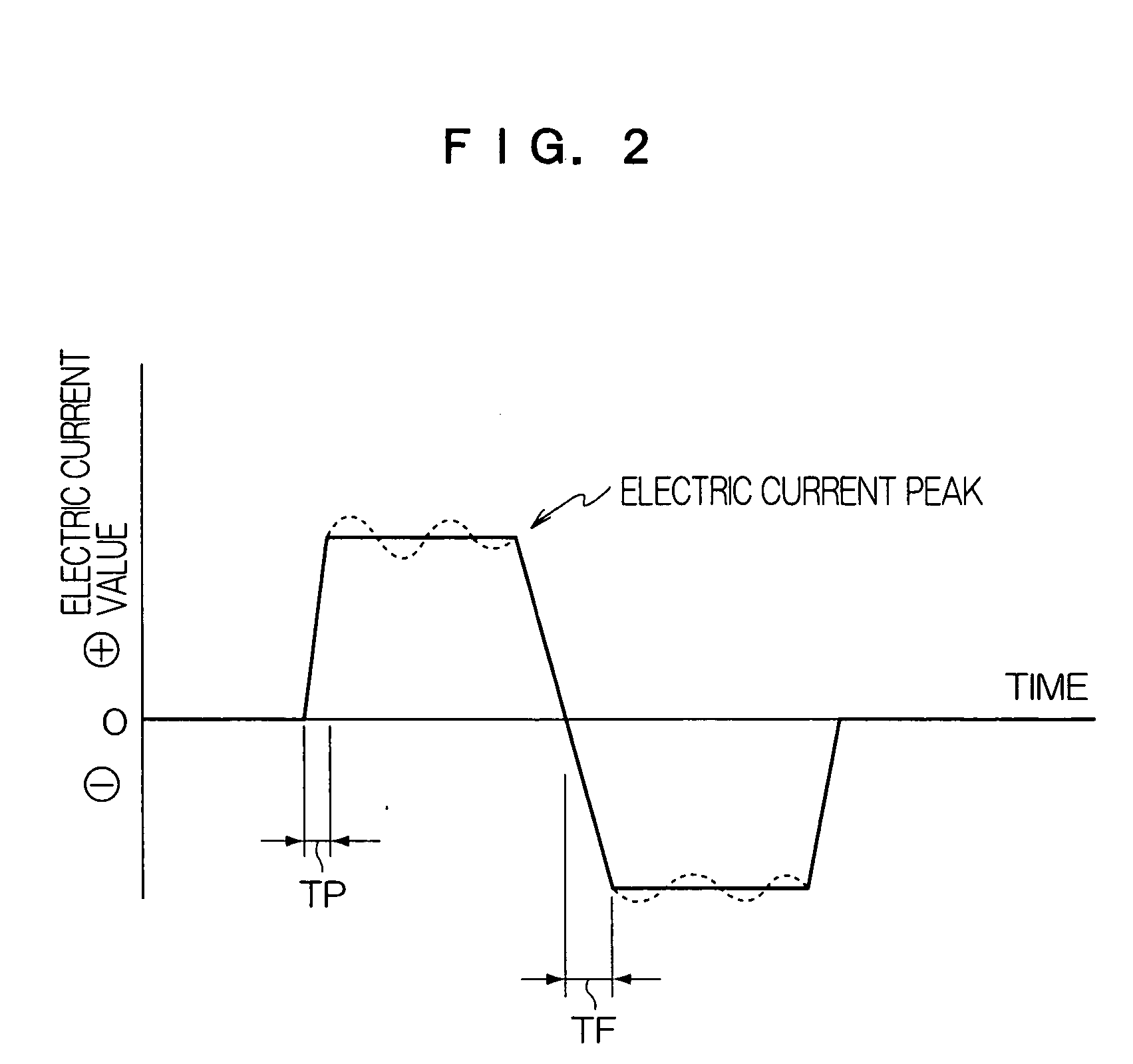Planographic printing plate precursor
a technology of precursors and printing plates, applied in the field of planographic printing plate precursors, can solve the problems of insufficient ability to inhibit the development of areas, low sensitivity of portions, and weaken the interaction of ir dyes or the like with binder resins, and achieve excellent printing durability and chemical resistance.
- Summary
- Abstract
- Description
- Claims
- Application Information
AI Technical Summary
Benefits of technology
Problems solved by technology
Method used
Image
Examples
examples
The present invention will be specifically described below by way of the following examples. However, the invention is not limited to these examples.
examples 1 to 8
[Production of a Support]
(Aluminum Plate)
An aluminum alloy comprising 0.06% by mass of Si, 0.30% by mass of Fe, 0.025% by mass of Cu, 0.001% by mass of Mn, 0.001% by mass of Mg, 0.001% by mass of Zn and 0.03% by mass of Ti, with the balance made of Al and inevitable impurities, was used to prepare a molten metal. The molten metal was filtrated, and then an ingot having a thickness of 500 mm and a width of 1200 mm was produced by DC casting.
Its surface was shaved by a thickness of 10 mm on average with a surface-shaving machine, and then the ingot was kept at 550° C. for about 5 hours. When the temperature thereof lowered to 400° C., a hot rolling machine was used to produce a rolled plate having a thickness of 2.7 mm. Furthermore, a continuous annealing machine was used to thermally treat the plate thermally at 500° C. Thereafter, the plate was finished by cold rolling so as to have a thickness of 0.24 mm. In this way, an aluminum plate in accordance with JIS 1050 was yielded....
example 9 to 16
[Formation of Supports]
An aluminum plate (JIS A 1050 material) of 0.3 mm thickness was etched with an etching solution having a caustic soda concentration of 30 g / L and an aluminum ion concentration of 10 g / L (solution temperature: 60° C.) for 10 seconds, washed with flowing water, neutralized with a nitric acid solution having a nitric acid concentration of 10 g / L, and washed with water. An alternating current having a sine waveform was used to subject the aluminum plate to electrochemical surface-roughening treatment in an aqueous solution having a hydrogen chloride concentration of 15 g / L and an aluminum ion concentration of 10 g / L (solution temperature: 30° C.) at an applied voltage Va of 20 V and an electricity quantity of 500 C / dm2. The aluminum plate was washed with water, etched with an etching solution having a caustic soda concentration of 30 g / L and an aluminum ion concentration of 10 g / L (solution temperature: 40° C.) for 10 seconds, and washed with flowing water.
Nex...
PUM
| Property | Measurement | Unit |
|---|---|---|
| thickness | aaaaa | aaaaa |
| thickness | aaaaa | aaaaa |
| thickness | aaaaa | aaaaa |
Abstract
Description
Claims
Application Information
 Login to View More
Login to View More - R&D
- Intellectual Property
- Life Sciences
- Materials
- Tech Scout
- Unparalleled Data Quality
- Higher Quality Content
- 60% Fewer Hallucinations
Browse by: Latest US Patents, China's latest patents, Technical Efficacy Thesaurus, Application Domain, Technology Topic, Popular Technical Reports.
© 2025 PatSnap. All rights reserved.Legal|Privacy policy|Modern Slavery Act Transparency Statement|Sitemap|About US| Contact US: help@patsnap.com



